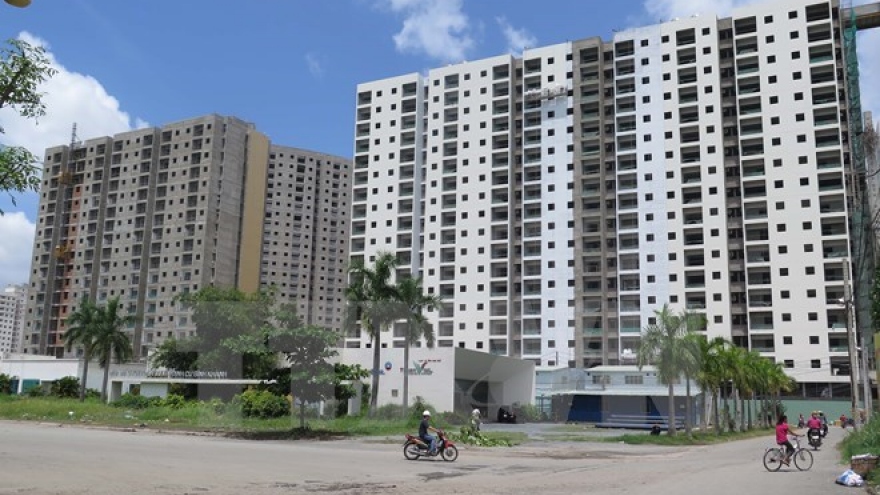SBV: Still much room for property loans
The State Bank of Vietnam (SBV) has said there will remain much room for banks to lend to the property sector even if credit tightening regulations drafted in Circular 36 apply.
Under the draft of the revised Circular 36 on which the SBV is seeking comments, commercial banks can use short-term capital for medium- and long-term loans at a maximum ratio of 40%, instead of the current 60%.
As explained by the drafting committee, the circular is revised to reduce liquidity risk for banks and too much lending to real estate.
The SBV said in a statement sent to the media on Tuesday that with the average ratio of short-term capital used for medium- and long-term loans at only 31% late last year, banks could continue providing more medium- and long-term loans for the economy, including the property sector. They could lend some VND540 trillion (around US$24.28 billion) but still meet the limit of 40% as proposed in the draft circular.
 |
The SBV said the revision of Circular 36 would not cause significant impact on credit to the real estate market. The problem is that whether real estate investors and traders could meet safety standards and loan requirements or not.
Real estate speculators and investors with poor financial capability would be most vulnerable to credit tightening. They are among those responsible for market volatility and bubbles of the real estate market if no effective measures are adopted, according to the SBV.
People who buy homes to live or benefit from the Government’s budget housing programs would not be affected by the revision of Circular 36, the central bank said.
It warned new bank credit risks surfaced last year as medium- and long-term loans soared 29% and accounted for nearly 50% of total outstanding loans. This could pile pressure on medium- and long-term capital mobilization as well as interest rates.
By the end of last year, outstanding loans for real estate trading and investment amounted to VND393 trillion, up 26% against 2014. If corporate bonds were taken into account, credit institutions’ total outstanding loans for real estate totaled VND478 trillion.
The real estate market, according to the SBV, could not develop sustainably if it depends solely on bank loans. The current credit structure shows that banks lend to both property investors and buyers, meaning banks are facing a double-barreled risk.


